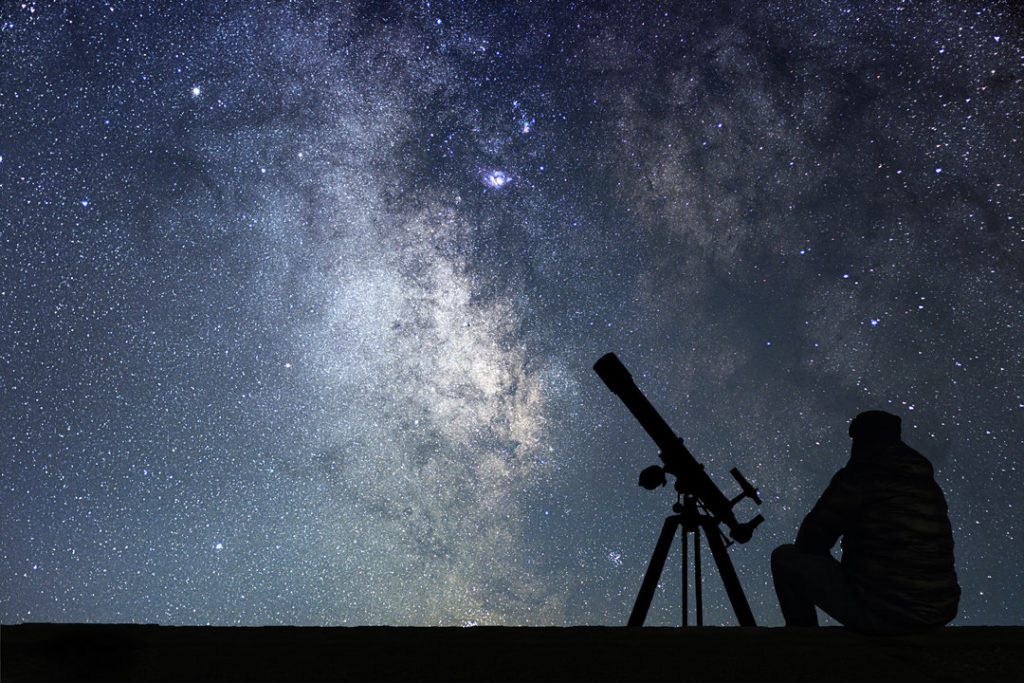BY MIKE LYNCH
I have good news and bad news about the constellation Scorpius the Scorpion. The good news is that it’s truly one of the few constellations that resembles what it’s supposed to be. The bad news is that in these northern latitudes it can be tough to see the great celestial scorpion. That’s because it’s a low rider in the southern sky. In the early evening this time of year,
Scorpius is at its highest point in the southern sky, but that’s not saying much because it’s barely above the horizon. If you have any tree line above the southern horizon you may not see Scorpius’ stinger. You may have to position yourself so that the southern horizon is as low as possible. Viewing from a hilltop usually takes care of that problem.
The brightest star in Scorpius is Antares, marking the heart of the beast. Antares has a definite reddish hue, demonstrating that stars come in different colors. They’re not just little white lights. A star’s color tells a lot about its nature. Bluish-tinged white stars are the hottest; some have surface temperatures of more than 30,000 degrees Fahrenheit. Reddish stars like Antares are cooler. Antares’ surface temperature is around 6,000 degrees Fahrenheit, about 4,000 degrees cooler than the sun.
Antares reddish hue is reflected in its name. Antares is a Greek name that translates to “rival of Mars.” You can easily confuse Mars and Antares with each other if you’re new to stargazing.
There’s no confusion between Mars and Antares when it comes to size. Mars is only about 4,000 miles in diameter, while Antares is well more than 800 million miles across! If we replaced the sun as the center of our solar system with Antares, its outer edge would extend beyond the orbit of Mars. Earth would be living inside Antares!
There are many stories in lore and mythology as to how Scorpius ended up as a constellation. One comes from Greek mythology. Zeus, the king of the Greek gods, dispatched a giant Scorpion to kill the mighty hunter Orion to break up an affair with Zeus’ daughter, Diana, the goddess of the moon. Orion hunted by night and slept by day. While he was on his nocturnal hunting adventures, Diana oogled over Orion as she dutifully led the moon across the sky. She would call down to the hunky hunter and they would have really long-distance conversations. They must have had giant megaphones. As time went on, Diana eventually joined Orion in his hunting excursions, ignoring her lunar duties.
Zeus learned of his daughter’s negligence and put a contract out on Orion. He had his staff send a giant scorpion to sting and kill Orion during his daytime slumber. When the fateful day arrived and the giant scorpion approached Orion, the ever-alert hunter awoke as the beast steered his way. Orion shot up from his slumber and valiantly fought the overgrown scorpion with all his might, but eventually he was stung and died instantly.
That night, Diana discovered the body of her dead boyfriend and was filled with tremendous grief. She managed to compose herself and lift Orion’s body to the sky and transform it into the famous constellation we see during the winter evenings. Diana also saw the giant scorpion fleeing from the scene. She put two and two together and sought revenge. She leapt at the steroid-enhanced scorpion and grabbed it, avoiding the deadly stinger, and flung it up into the opposite end of the sky from where her dead boyfriend was. That’s why Orion and Scorpius are never seen in the sky at the same time. Orion prowls the winter skies, and Scorpius trolls the summer heavens. Orion won’t ever get stung again!
Lynch, an amateur astronomer and professional broadcast meteorologist, can be reached at mikelynch@comcast.net.




